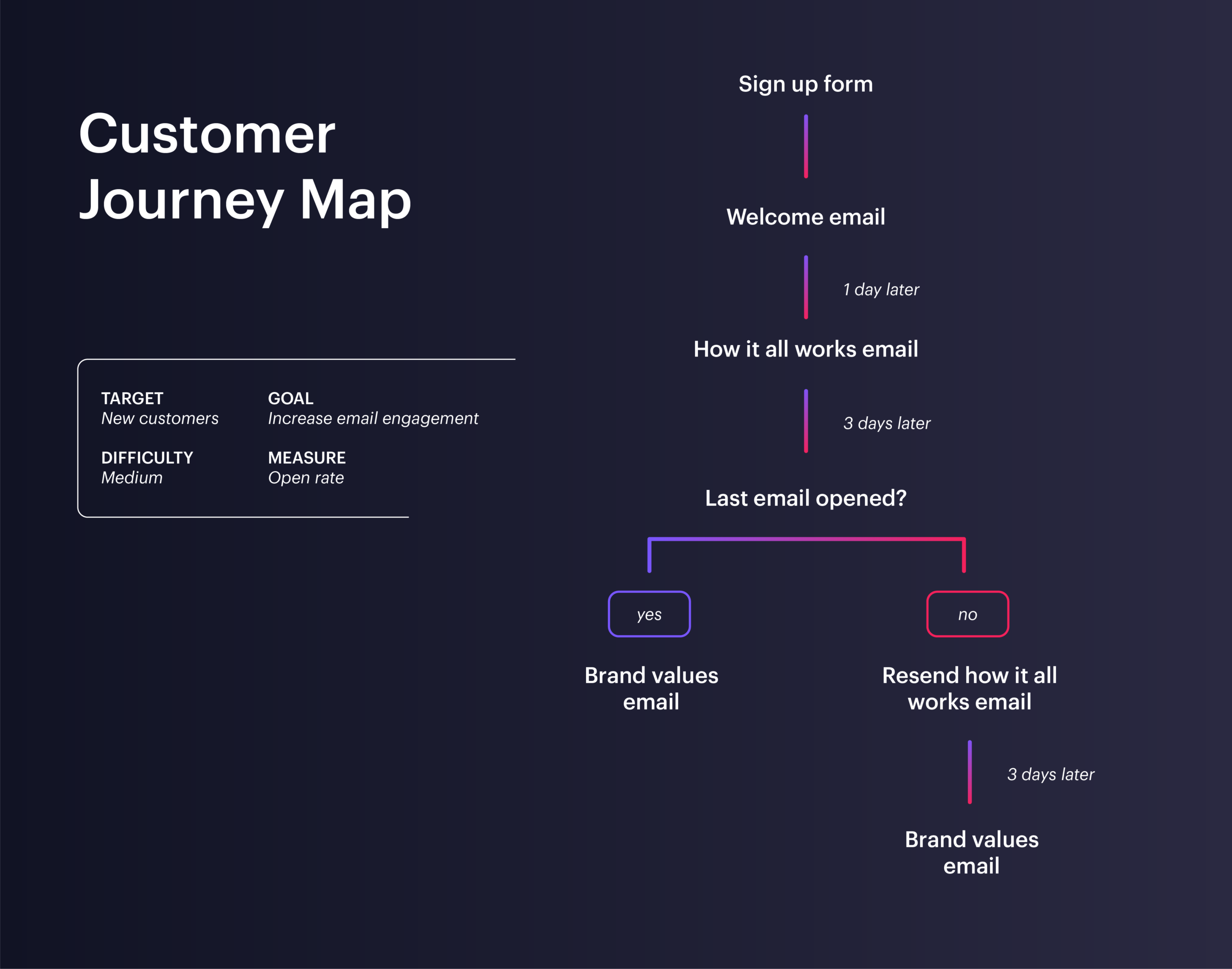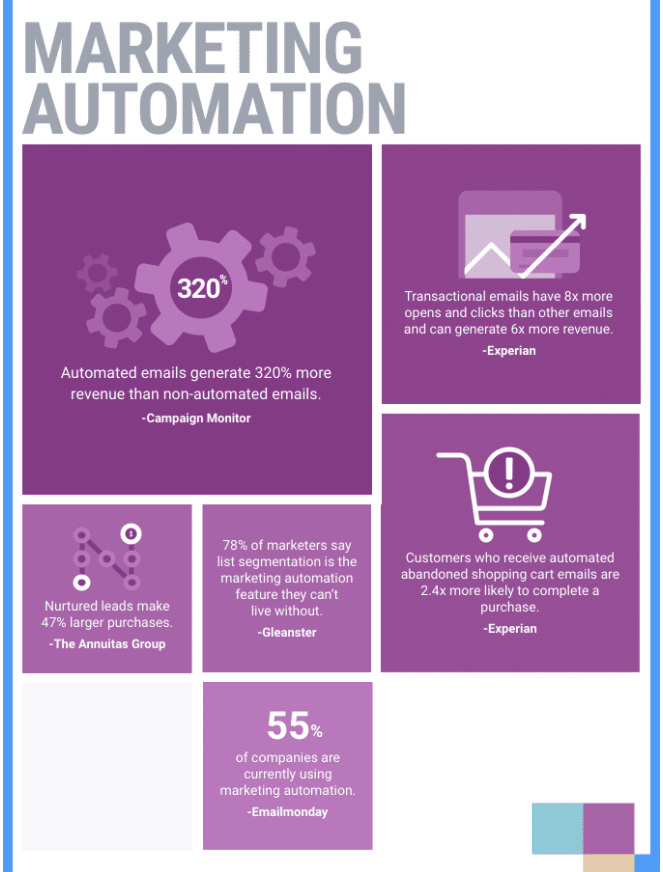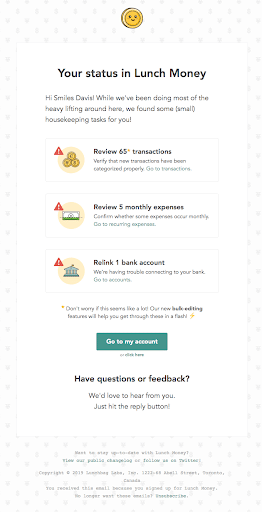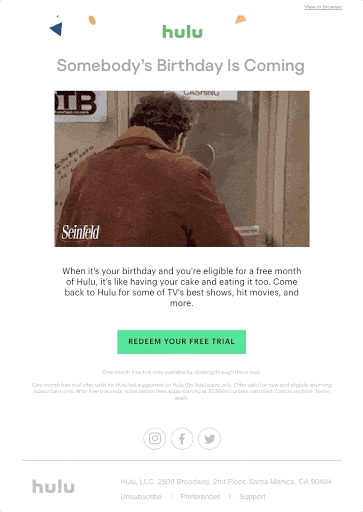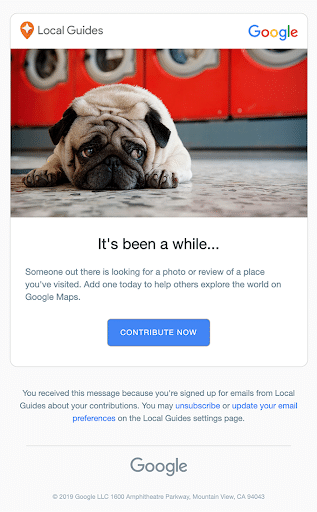A strong understanding of your clients’ different customer journeys is crucial to maintaining a strong relationship with your clients’ customers. The more targeted and personalized each touchpoint or email feels to a customer, the more engaged they’ll be with your clients.
That’s good news for your clients, of course. But it’s great news for you and your agency, too. Better performance means a stronger relationship with your accounts, higher renewal rates, and a strong resume you can use to attract new business to your agency’s email marketing services.
Building highly targeted emails for every customer journey is time-consuming if sent as one-off campaigns. It’s simply not scalable to manually send messages to every target right at the most opportune moment. Fortunately, advanced marketing automation tools streamline the customer journey touchpoint process and empower your clients to connect with customers when it matters most.
In this guide, we will first discuss what customer journeys are, and will then explain how marketing automation plays a role in connecting customers to your clients.
What is a customer journey, and why is it important?
The customer journey is the sum of experiences, decisions, and interactions someone has leading up to and through making a purchase. It describes how someone first becomes aware of a brand, engages with it, and eventually buys (or doesn’t buy). And hopefully, the journey doesn’t end there.
Everyone’s customer journey is unique, and every brand will have different ideal paths to purchase. Even so, there are recognizable patterns in buying behavior and consumer preferences that can be identified, mapped, and acted on.
The goal for your clients is to acquire new customers and retain the customers they already have—one of the best ways to do this is by managing different customer journeys. For example, one customer journey can exist for someone who signed up for your client’s newsletter for the first time, and a different customer journey can exist for a customer who decides to extend their existing monthly subscription. As the experts, you should be offering advice, strategy, and support in recognizing and improving their journeys so potential customers are more likely to convert and keep coming back for more.
A common starting point for agencies that plan customer journeys for their clients is identifying which personas make up their client’s customer base. From there, you can determine which stages exist within a customer journey.
According to Daniel Newman, CEO of Broadsuite Media Group, you need to know customers’ different personas, goals, and what actions a customer needs to take in order to reach their goal. This will determine the different touchpoints your clients should prioritize for a personalized and targeted customer journey.
Some agencies decide to create customer journey maps and then use their analysis to discover where there are gaps in communication and where their clients succeed in customer satisfaction. According to Goran Paunovic, Creative Director at ArtVersion Interactive,
“Journey mapping…encourages stakeholders to consider the customer’s needs, wants, emotions and questions, and [creates] the path to fulfill those needs.”
The main things to consider when developing and analyzing a customer journey is to look at what customers feel, expect, and need at each stage of the journey. A customer might want to feel appreciated after first signing up for a newsletter, and they will want to feel understood and heard later on in the journey when they are seeking an effective solution to their problem.
It’s important to be in touch with the customer from start to end of their journey and throughout the different stages to make sure that they feel valued, heard, and engaged. McKinsey & Company believes that doing so can “enhance customer satisfaction, improve sales and retention, reduce end-to-end service cost, and strengthen employee satisfaction.” Not only will customer journeys keep your client’s customers engaged—but they will also drive increased ROI.
Using automation to trailblaze email journeys
Marketing automation emails that are sent in customer journeys are based on triggers defined by an email marketing tool. This is known as an email journey. When each customer takes a specific action, the marketing automation tool of choice will send that customer a relevant email that you designed with or for your client.
These tools also allow you to define what each ‘trigger’ is, which will vary from client to client and journey to journey. You can plot different customer journeys as needed and create the content for each email in every stage of the journey. This is far more efficient than sending one-off email campaigns to a list of customers (though there’s still a time and place for that).
When designing behavior-triggered emails, the emails are automatically sent out based on the segmented lists you build with your clients and the stage in which each individual falls within their journey. This saves time and increases relevance and personalization. In fact, studies show that automated emails get 86% higher open rates, produce a 196% increase in click-through rates, and generate 320% more revenue than standard promotional emails.
Plotting the course to conversion: Customer journey mapping
Combining the ideas of customer journeys and email journeys may sound a little complicated at first, but visualizing them together can help explain them to your clients.
The process of email journey mapping combines the customer journey with an automated email process to create an outline of the content the subscriber will receive during their journey. A basic customer email journey might look something like this:
You can begin with a simple outline of a journey for a given persona with your client, then build it out over time with more touches or adjustments based on testing results.
The different stages and touchpoints in an automated customer journey
One of the first steps in refining a great email journey map is determining how many touchpoints you should provide for, and what message you want to highlight at each point. The most compelling journeys are usually those with regular, consistent messaging – but if you send too often, or aren’t providing the right message for the moment, you risk an unsubscribe. It’s also important to factor in how your clients’ other channels might come into play, aligning email touches with a well-timed SMS or direct mail campaign can make for a powerful combination.
There are three basic stages most customers go through when exploring a brand. In the first stage, casual prospects have become aware of your client’s brand and offerings. The second stage involves active subscribers who have had their first experiences with your client’s business, whether it’s visiting a website, signing up for email, or even shopping in their store. Finally, in the third stage, these prospects indicate some willingness to become customers and should be guided toward making a purchase.
Potential customers at each stage have distinct needs and should receive different kinds of email content and messages that will guide them to the next. For instance, early messages in stage one should be more introductory in tone, explaining the ins and outs of your client and what they should expect. Later in stage three, it’s time to push more direct, action-oriented messaging. In between, helpful content and resources will help prospects feel more comfortable with the client and more confident about making a purchase decision.
To learn more about what the content of these journeys should be, you can read more here.
The power of email automation
When combined with email list segmentation, automation can turn your email marketing strategy from so-so to unstoppable.
Find the complete infographic of high-impact email marketing statistics here.
4 Automated customer journeys you can implement for your clients
Now it’s time to start thinking about how to transform customer journey strategy and implementation into marketable services and billable hours for your agency.
Creating automated customer journeys can be an intimidating task for brands to think through about all the varying types of subscribers they’ve accumulated. This is the perfect opportunity for you to swoop in and save the day with indispensable ideas and proven tactics to build out and optimize their customer experiences into high-converting purchase funnels.
To assist in your creative process, we’ve compiled a list of automated customer journeys that could (and should) be included in every email marketing agency’s arsenal.
1. Welcome email
We all know how important first impressions are. When subscribers first sign up for your client’s newsletter or purchase a service, this behavior should trigger an automated welcome email or series of emails that makes a big, memorable impact.
These campaigns are also known as lead nurture campaigns since a new lead will often sign up for a brand’s newsletter or another email list prior to making a first purchase.
Through the use of a welcome email campaign, you can nurture your clients’ leads and slowly encourage products or services that may suit their needs instead of overwhelming them with purchase decisions right away.
Many agencies decide to send special offers in welcome emails, which encourages users to explore your client’s products. You can also include fun content with tips and tricks they can use when learning about your client’s brand. This is a good opportunity to incentivize further connection to your client, such as signing up for a rewards program or following their social accounts.
You can decide to include 5-10 emails in this initial stage spread out across the month in order to promote engagement through offers and storytelling content.
Source: Really Good Emails
2. Reminder emails
Reminder emails are most relevant to existing leads and customers who need to follow up with your client’s brand. This could include scheduling follow-up appointments, renewing a subscription, or taking advantage of certain perks and benefits. This is a great way to re-engage with current customers that have gone dormant by sending them a quick call to action.
You may want to have just a couple of reminder emails set up in this journey in order to prompt them to take action, while also providing them with useful content that relates to their next step.
For example, if they’re being reminded to renew a subscription, you might want to include what’s different about the new subscription model versus the old one.
Source: Really Good Emails
3. Milestone offers
Milestone emails can include anniversary offers or new VIP offers, as well as personal milestones like birthday messages. These emails are based on triggers and can depend on where someone is in their journey or what data you have on them in your client’s CRM. Sending relevant and personalized offers helps to build a relationship with your client’s customers, and also encourages them to make purchases.
These messages are especially useful because they nurture loyalty. Only your client’s most dedicated customers will receive these emails. These journeys send the message that the more loyal a customer is to your client’s brand, the more benefits and special treatment they will receive.
Source: Really Good Emails
4. Re-engagement emails
These “We miss you” emails target customers who seem to be at the end of their customer journey. As discussed earlier, the goal is to make sure a customer journey continues after the purchasing process and that customers remain engaged with your clients. One of the best ways to re-engage with customers is by understanding what their expectations are, why they became unengaged, and how you can appeal to their needs.
Customer journey mapping can really come into play here when designing these automated customer journey emails. Sending dynamic content, solutions to their problems, engaging stories, and offers can help to re-engage distant customers and bring them back into the fold.
Source: Really Good Emails
Wrap up
When creating customer journeys for clients, you need to take into account the different stages that exist in each journey and how these stages vary by segmented lists or personas. Pay attention to customers’ feelings and needs in each stage of the process. Take time to truly understand the customer experience of every client and how their various personas might begin a journey.
Marketing automation not only saves time, but it also increases relevance, efficiency, and revenue. The more you can focus on building strong relationships for your clients; the more effective their automated customer journey campaigns will be.
Email automation isn’t just good for sending relevant information to your email subscribers, it can also be used to gather valuable customer data. Check it out.

